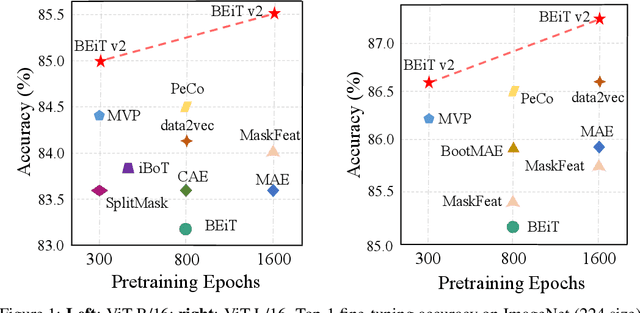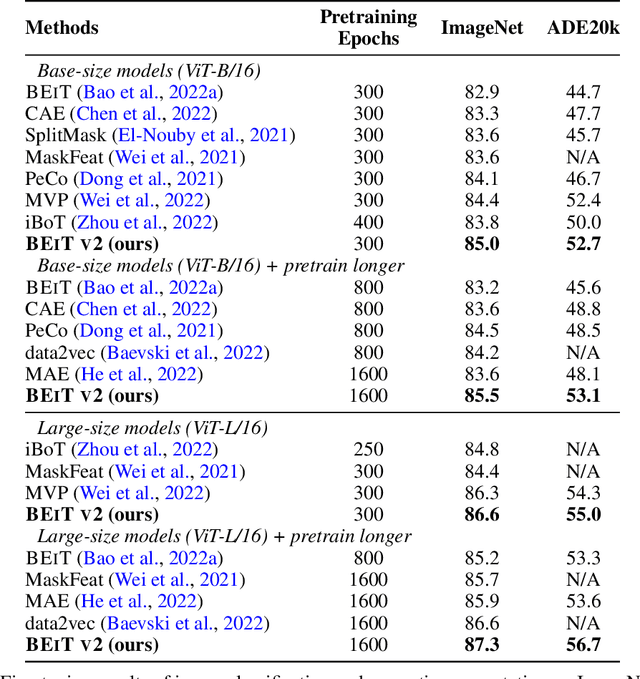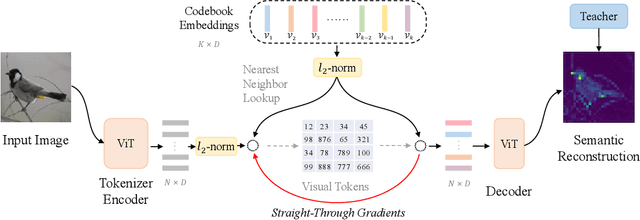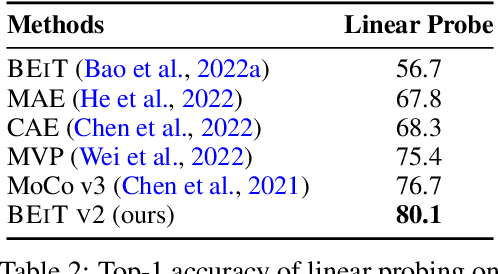BEiT v2: Masked Image Modeling with Vector-Quantized Visual Tokenizers
Paper and Code
Aug 12, 2022



Masked image modeling (MIM) has demonstrated impressive results in self-supervised representation learning by recovering corrupted image patches. However, most methods still operate on low-level image pixels, which hinders the exploitation of high-level semantics for representation models. In this study, we propose to use a semantic-rich visual tokenizer as the reconstruction target for masked prediction, providing a systematic way to promote MIM from pixel-level to semantic-level. Specifically, we introduce vector-quantized knowledge distillation to train the tokenizer, which discretizes a continuous semantic space to compact codes. We then pretrain vision Transformers by predicting the original visual tokens for the masked image patches. Moreover, we encourage the model to explicitly aggregate patch information into a global image representation, which facilities linear probing. Experiments on image classification and semantic segmentation show that our approach outperforms all compared MIM methods. On ImageNet-1K (224 size), the base-size BEiT v2 achieves 85.5% top-1 accuracy for fine-tuning and 80.1% top-1 accuracy for linear probing. The large-size BEiT v2 obtains 87.3% top-1 accuracy for ImageNet-1K (224 size) fine-tuning, and 56.7% mIoU on ADE20K for semantic segmentation. The code and pretrained models are available at https://aka.ms/beit.
 Add to Chrome
Add to Chrome Add to Firefox
Add to Firefox Add to Edge
Add to Edge